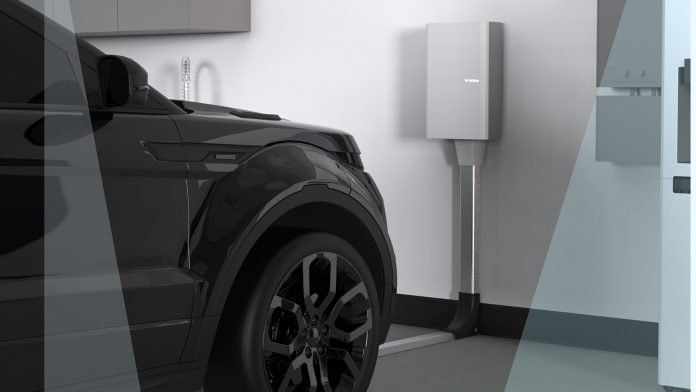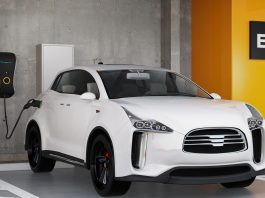WiTricity’s Senior Principal Engineer, Ky Sealy, answers the pressing questions surrounding the safety of wireless charging for electric vehicles.
As electric vehicles (EVs) become more commonplace and car manufacturers focus on expanding their portfolio to include EVs, consumers are becoming more concerned with fuel for such vehicles. Whilst most people are aware of the hazards associated with gasoline, many may question the safety of electric vehicle charging. EV charging is safe, but wireless charging for EVs is safer. Not only are there no wires to tangle and trip over, no unsanitary handles to hold, no potential for electrocution from broken handles, and no slipping on the ice and snow to charge in bad weather, but the mechanics of charging itself is safer.
To find out more about the safety of electric vehicle charging, Innovation News Network spoke to expert, Ky Sealy. Ky is a world-renowned expert in the field of wireless power transfer and is currently involved in a leadership role in multiple standards organisations, including SAE, IEC, CISPR, ITU-R, AirFuel Alliance, amongst others. Ky represents the US as a wireless power expert and delegate for many of these standards, and consults administrations on related matters such as electromagnetic emissions, compatibility, exposure, and more. With this experience comes an extensive knowledge to evaluate the safety of electric vehicle charging.
Ky has a broad background in electrical engineering and software design and is a named inventor on a number of patents and patents pending, as well as publications in the areas of LIDAR and resonant wireless power transfer.
Ky, please start at the beginning. What is wireless power transfer and how does it work?
The most common method of Wireless Power Transfer (WPT) used today is accomplished via low to high frequency (30 kHz to 30 MHz) time-varying magnetic fields. This may also be referred to as ‘inductive WPT’ or ‘magnetic field WPT’. A less common type of WPT that also uses time-varying electric fields in this frequency range is ‘capacitive WPT’. Capacitive WPT is not prevalent but there are some applications that have been proposed. Standards today are based primarily on the magnetic-field WPT. Finally, there are other WPT methods that use ultra-high frequencies (above 300 MHz) that can form radio frequency (RF) beams, but these are typically only suitable for very low-power applications.
I understand that the differences between magnetic and electric fields are not necessarily intuitive to everyone, but most of us have experienced the distinction. As an example, a static (non-varying) magnetic field is commonly used by refrigerator magnets that cling to the surface of ferrous metals. Such magnets can have extremely high field levels to achieve their goal. On the other hand, an electric field can be used to enable a balloon to stick to a non-metallic wall. When the balloon is rubbed against a person’s hair or clothing, the balloon becomes charged and the opposite charges in the wall and the balloon cause an attraction. This static charge produces electric fields that help attract the balloon to the wall.
In the case of WPT, power can only be transferred via fields when the field varies polarity quickly over time. The rate at which the field varies is called the frequency (expressed in Hertz). As the field is time-varying, there is no discernible attraction force, as in the case of the magnet and balloon that have static fields. Time-varying fields are caused by time-varying or alternating current (AC) found in most homes. The difference with WPT is that the frequency of operation is much higher than the 50 or 60 hertz found in the home.
One of the fascinating things about using magnetic field WPT (based on physics principles called Ampere’s law and Faraday’s law) is that there is no possibility of electrocution. Magnetic fields are impervious to air, water, ice, concrete, wood, plastics, and other common non-metallic materials. They pass through these objects without interaction and allow hermetically sealed designs that are safer and more robust than are possible with contact-based or wired charging.
Is wireless charging for EVs different from wireless charging for my cell phone?
The most common WPT standard used for cell phone charging today is the ‘Qi’ (pronounced ‘chee’) standard. This WPT is magnetic-field or inductive WPT that I described earlier. Wireless power transfer for electric vehicles also uses magnetic-field WPT, but it also uses the principle of resonance that allows the power transfer over greater distance and with positional freedom, all while maintaining very high efficiencies (e.g. 88% – 93% grid-to-vehicle, as opposed to 85% – 94% typical for plug-in charging). We sometimes distinguish magnetic field WPT using the principle of resonance as ‘magnetic resonance WPT’ or ‘highly resonant WPT’.
WiTricity is the foremost expert company using magnetic resonance WPT. The perfect application for magnetic resonance WPT is for electric vehicles, and there are already standards in place, such as SAE J2954 and others, that allow many different companies to build compatible and interoperable wireless power chargers for EVs based on WiTricity’s technology.
Any conversation about wireless charging inevitably includes electromagnetic fields. What are they and why are they important?
We have already briefly discussed electric and magnetic fields and how we have experienced their differences, but they are also related. An ‘electromagnetic field’ is a general term for considering both electric and magnetic fields. As the frequency of the time-varying field increases, the interaction between magnetic and electric fields becomes more easily modelled at shorter distances. In fact, at very high frequencies above 30 MHz at distances greater than ~1.6 m, these fields are directly related by what is known as ‘far-field free-space impedance’ (377 ohms). Due to this known relationship between electric and magnetic fields, we often generalise consideration for interaction of electric and magnetic fields as ‘electromagnetic fields’.
Are electromagnetic fields safe?
The ways in which our bodies interact with electromagnetic fields have been studied for a long time and are well understood. Almost all electronic devices produce some level of electromagnetic fields (also referred to as electromagnetic radiation or electromagnetic emission). These products are regulated by regional authorities (for example, the FCC in the US) to ensure specified safety standards are met. Any product that meets or exceeds the safety requirements is determined to be safe. Products that do not meet the safety criteria are not authorised to be sold. These criteria are based on solid science with a significant margin of safety.
Are there different types of electromagnetic fields? How do they interact with our bodies?
There are two primary types of electromagnetic radiation: ionizing and non-ionizing radiation. Ionizing radiation is radiation that can directly affect changes in the atomic structure of the body by ionizing atoms. Such radiation includes X-rays, gamma-rays, and others above the frequencies of visible light (e.g., petahertz to exahertz). Ionizing radiation is mostly used for medical and inspection technologies and requires more stringent regulation for exposure.
Non-ionizing electromagnetic radiation is more common and includes wireless radios, Wi-Fi, and other general electromagnetic waves used for communication and power (e.g., kilohertz to gigahertz). Non-ionizing radiation within prescribed limits is very safe. Regional regulations ensure that products do not exceed certain levels of emission to prevent interference with other systems and are safe for humans.
Non-ionizing radiation typically does not cause any immediately noticeable effect in the body, since the effects have only to do with small tissue heating and potential nerve stimulation (e.g., tingling) caused only by very high field levels. Wireless power transfer is only performed with safe, non-ionizing electromagnetic fields that do not affect the human body in any appreciable way and which levels are well below prescribed safety limits. This highlights how wireless power transfer can settle fears about the safety of electric vehicle charging.
So, what exactly are the differences between electric fields, magnetic fields, and electromagnetic fields?
Electric and magnetic fields are both categories of electromagnetic fields. Whenever a time-varying electric field exists, there is a corresponding magnetic field and vice-versa. Sometimes, fields that have dominant electric potential are distinguished from those that have dominant magnetic potential. Each of these types of fields have different effects on the body and may behave differently around various types of materials.
In this sense, it can be important to distinguish between the two types of fields and which is dominant when discussing the safety of electric vehicle charging. Wireless power transfer technology, such as magnetic induction and magnetic resonance, are based on transferring energy using the magnetic field component in the reactive near-field region. These reactive near-fields are non-radiative and fall off with distance at a rate much faster than far-field RF technology like Wi-Fi, cell phones, etc.
You mentioned cell phones earlier. Do they emit electromagnetic fields like wireless power does?
Yes. Like other products that use electromagnetic energy for communication and power, such as Wi-Fi or Bluetooth, cell phones also emit electromagnetic radiation. As with all products that emit radiation, both cell phones and wireless power systems are regulated and required to meet certain standards. Cell phones are most referenced because of how mobile they are and how close to the body they are used. Since cell phones must interact with base stations that are physically far from the user and the user is often holding the phone next to his/her head, RF exposure caused by cell phones can be higher compared to other types of products.
Who decides what are safe electric and magnetic field levels?
Each country determines which local regulatory body governs the safety of non-ionizing electromagnetic radiation, often referred to as radio frequency (RF) exposure. In the US, the FCC sets regulations for RF exposure in Title 47, Chapter 1 of the Code of Federal Regulations (see §1.1307, §1.1310, §2.1091, and §2.1093).
In other countries, there is usually a regional governing body in charge of setting regulations. Most regional governing bodies base regulations on well-known guidelines, studies, and standards that are published. The most common and well-known guidelines are produced by the International Commission on Non-Ionizing Radiation Protection (ICNIRP) and the Institute of Electrical and Electronics Engineers (IEEE).
Who decides what level of RF exposure is safe and where are these guidelines?
In general, each region has different restrictions with respect to RF exposure requirements. The most accepted guidelines globally are produced by ICNIRP and IEEE’s International Committee on Electromagnetic Safety; although many countries, including the US, have similar but different restrictions so it is important to check the specific restrictions for each region. Specific guidelines for wireless power in the US can be found here and here.
The applicable ICNIRP documents are the electromagnetic field guidelines from 2020 (which cover from 100 kHz to 300 GHz) and the 2010 EMF guidelines that still apply from 1 Hz to 100 kHz.
The latest applicable IEEE document is IEEE C95.1-2019 that covers exposure guidelines from 0 Hz to 300 GHz.
The global ITU-T organization also provides publications and recommendations for electromagnetic field safety through its Study Group 5. The World Health Organization (WHO) also provides global input on the topic.
Do countries differ in regulation with respect to what is safe?
Yes. Local regulations may differ from country to country; however, most follow similar guidelines.
Will wireless power for my electric vehicle shut off if it interacts with a foreign object. For example, if an animal climbs under the car?
Wireless power systems for EVs have foreign object detection (FOD) systems to shut down the power transfer if a human or animal were to get in between – or on – the wireless power pad. Neither your pet nor yourself would feel anything even if it were possible to be exposed. The magnetic field level is only high directly between the pads, and the FOD systems will ensure that the power is shut off well before your hand or pet could reach under the vehicle that far.
Inside and outside the car, the magnetic fields are so low that there is no exposure concern whatsoever. In fact, the general public safety limits that wireless power systems are required to meet have safety factors of several orders of magnitude beyond what can potentially impact the body in any way. It is generally safer to stand next to a vehicle wirelessly transferring thousands of watts of power than it is to hold a cell phone next to your head, or stand next to your induction hob while cooking.
Is wireless power safe if I have a pacemaker?
Yes, it is. In fact, wireless power is safer for those with pacemakers (referred to as cardiac implantable electronic devices or CIEDs) than retail store security alarms. Doctors encourage people to not linger near shop security alarms as they could cause a pacemaker to skip beats or slow down, but this is not the case with wireless power for EVs. In 2019, the FDA participated in field measurements and testing, with actual CIEDs placed next to the EV WPT system, transferring power up to 11,000 W.
The results of this testing, along with other tests, were outlined in an SAE J2954 report in which the FDA contributed. In summary, the field levels are so low in and around the vehicle that WPT does not have any effect on a pacemaker. Just to be sure, standards for EV WPT systems, including SAE J2954, require the WPT system to have even lower field restrictions than are required for human safety in these regions.
I understand that you can put the charging pad in your garage, driveway, or even buried underground. Will the wireless charging power melt snow and ice?
EV WPT systems can definitely power through all sorts of dielectric materials without any discernible effect. As magnetic fields are impervious to water in any state, the field itself will not heat up nor melt snow and ice. Although all electronics produce a little heat when operating so it is possible it could help, I would say it is unlikely.
Is it safe to remain in your car while it is charging?
Yes, it is safe to remain in your vehicle while wireless charging. You can sit in, move around, and stand outside of your car during wireless charging without any concern. On the other hand, have you ever thought about how dangerous it can be to bump a gasoline vehicle’s exhaust pipe? Exhaust pipes can reach staggeringly high temperatures beyond what even your oven can attain. There is no need to worry about that kind of problem when regarding the safety of electric vehicle charging when being powered wirelessly.
How is it that a microwave oven can heat up water and food and yet you claim that an EV WPT system transferring much more power would not do anything to water or nearby objects?
Great question. To understand this, it is important to know that microwave ovens typically operate at a frequency of 2.45 GHz whereas EV WPT systems typically operate at 85 kHz. The factor of difference between the frequencies is several orders of magnitude (i.e., ~28,823 times), and this matters. Microwave ovens use this ultra-high frequency because, at very high intensities, 2.45 GHz interacts weakly with liquids and causes the liquid molecules to vibrate and heat up.

Lower frequencies do not interact appreciably, and higher frequencies cannot penetrate deep enough into the food. However, even a microwave oven is required to contain that extremely high intensity electromagnetic field and ensure that RF exposure limits are met outside the microwave. A WPT system is nothing like a microwave.
Please note, this article will also appear in the tenth edition of our quarterly publication









